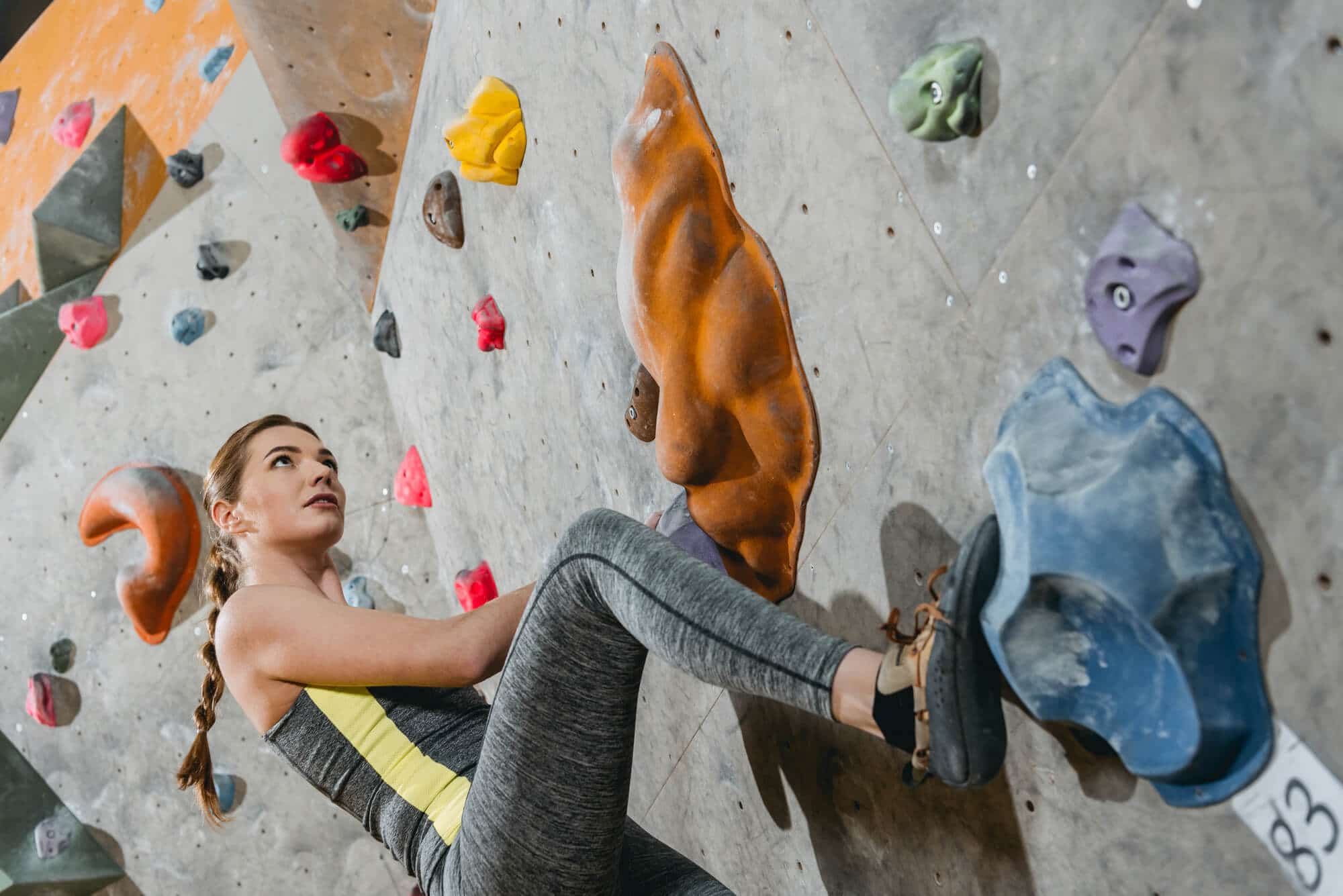How Many Times a Week Should You Climb?
This entry was posted on February 17, 2021.

Climbing is a mix of a fast twitch and slow twitch sport. It requires the endurance of slow-twitch muscle fibers and the explosive power of fast-twitch muscle fibers.
This means that if you’ve had a hard session of climbing, your body needs more time to heal through rest.
What is the best climber routine that will not pound the muscles in your body so that you will get more benefits than injuries?
Let’s take a look at this from Fitness Expo.
Factors That Would Affect a Climbing Workout Program
The amount of time that you should be climbing in any form, whether it’s vertical climbing with outdoor or indoor rock climbing or doing your gym routine on a mountain climber or climbing machine, depends on a number of factors.
The most common factors that can help you determine the best climber workout routine that best suits your needs are:
The Intensity of Your Climbing Session
- Similar to any workout program, the more intense your climbing gym routine or outdoor climbing program is, the more time your muscles will need to recover.
- You know your body more than anyone else so if you feel you’ve worked out your muscles to the max, they need time to recover.
- This is one of the most essential factors to consider when making your climber workout plan.
The Volume of Your Training
This includes how long your climbing session is and the types of exercise for climbing that you do throughout the week. Remember that the more you workout, the more time your muscles need to rest.
Need an equipment to assist you in your workouts? Check out the Stairmaster 8 Freeclimber.
This machine is functional and safe making it a perfect companion for cardio workouts.
Training Experience
If you are new to a climbing gym routine or a climbing workout program indoors or outdoors, you will most likely need more time to recover.
More experienced mountain climbers, for example, don’t need time to acclimate their body to training, hence, they can do more strenuous exercises for climbing for longer periods with higher frequency.
Age
Age plays a big role in how many times a week you should climb including the amount of time you will need to recover.
This also determines the number of days or weeks to repeat a certain workout.
Gender
One study, among several other studies, cited by Second Edition, said that the optimal recovery time for strength development and function was 48 hours for males and only 4 hours for females.
Defining an Effective Climber Workout Routine
Before we delve into different climbing workout programs, you should understand what you should consider when you are evaluating how you feel during a climbing workout.
Knowing what’s happening to your body while doing exercises for climbing will let you know if you should keep climbing.
Tendons
- If your tendons hurt, stop climbing. Save yourself from worse injuries that can take you away from climbing for months.
Muscles
- Pay attention to fatigue and soreness when you are doing your climbing gym routine or outdoor exercises for climbing.
- When your muscles feel sore, take a break. If the soreness and fatigue persist, you should end your training session and allow your muscles to recover.
Skin
- When you feel a deep burn during your climbing sessions, give your skin time to rest.
- Know if your hands cannot handle the constant strain on your skin any longer.
Climber Workout Routine or Climber Workout Programs
Here are several climber workout programs that can also serve as a climber workout routine from Eric Horst’s Training for Climbing:
Beginner’s Training Program
-
(<1 year experience)
- Learn climbing skills
- Refine technique
- Develop mental skills and manage fear
- Improve body composition and general conditioning
- Increase climbing-specific strength and endurance, develop important stabilizer and antagonist-muscle strength
- Time commitment: 1-2.5 hours, 2 to 5 days per week (including climbing days)
Intermediate Training Program
- Increase maximum strength and power and limit bouldering ability
- Increase strength and power endurance
- Improve stamina, aerobic endurance, and recovery ability
- Increase rotator cuff strength, stabilizer, and antagonist muscle strength
- Refine mental and technical skills
- Time commitment: 1.5 hours – 4 hours, 3 to 6 days per week (including climbing days)
Advanced Training Program
-
(3+ years experience)
- Build elite-level strength and power
- Optimized body composition for maximum strength-to-weight ratio
- Improve strength and power endurance
- Enhance recovery capability
- Fortify rotator cuff and stabilizer muscles for injury avoidance and peak performance
- Time commitment: 1.5 5 hours, 4 to 6 days per week (including climbing days)
The Antagonist Muscle Workout
The antagonist’s muscles are those that are underworked by climbing.
When these muscles are left out during climbing workouts, you can experience muscular imbalance.
Here are some well-known workouts for these muscles:
- Pushups
- Dips
- Reverse wrist curls
- Shoulder press
These are exercises that are recommended for antag training. Doing 2-3 sets of 10-20 reps will go a long way.
Let Your Grip Do More Than You Thought It Could
Find out what works best for you in your climbing workout program. Your optimal climbing session will depend on so many factors that you should not ignore, especially how your body feels.
When you’ve come to the point where your grip does more than you thought it could, you’ve come far in your climber workout routine.
You can always re-adjust your climbing session intensity and how often you climb each week so that you don’t get ripped.
More from Fitness Expo
The 5 Best Exercise Machines for Weight Loss
How to Increase Leg Power with a Rower





